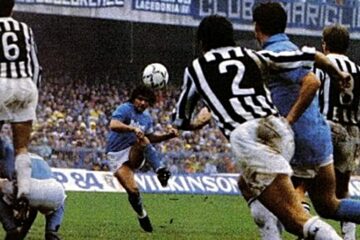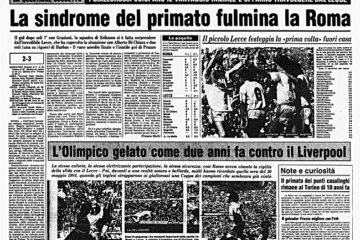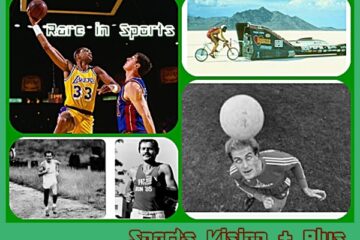Zico to Udinese, the transfer story that turned utopia into reality!
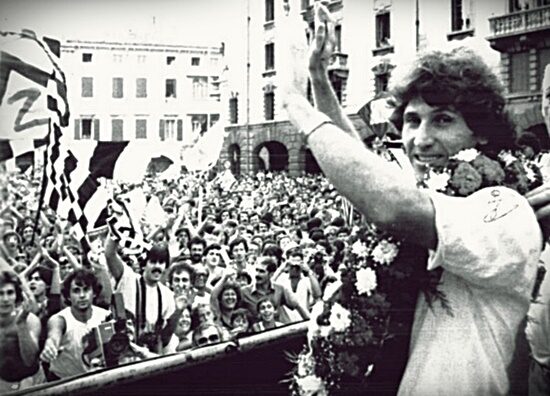
A somewhat unpredictable transfer operation, which was met with enthusiasm but also with a lot of controversy.
Summer of 1983.
Italian football has recently reopened its borders to foreign players. Many champions will arrive in Series “A”, but also players who will be below the level of this championship. However, it is an excellent opportunity to grab some business, so politicians and entrepreneurs did not stand aside. Familiar and lesser known faces take the reins of many teams. Mantova takes on Sampdoria, Dino Viola takes on Roma. Something is also moving in Friuli, in the person of Lamberto Mazza: owner of Zanussi appliances and now of Udinese. In those hot weeks of the transfer market, the president of Udinese surprised everyone by impromptuing a rally in the square attended by a large crowd of its fans.
He has a big announcement to make: Udinese have bought Zico! Few believe it. One thinks of a homonym. But no, Mazza swears it’s really Arthur Antunes Coimbra, aka Zico, one of the strongest Brazilian footballers of all time. The total cost of the operation is 6 billion lire. The crowd of fans is in ecstasy, but the anger of the Zanussi and CGIL workers also erupts and attacks: “To buy Zico he put thousands of workers on surplus wages.” But who was “Zanussi” and what security did this company provide?
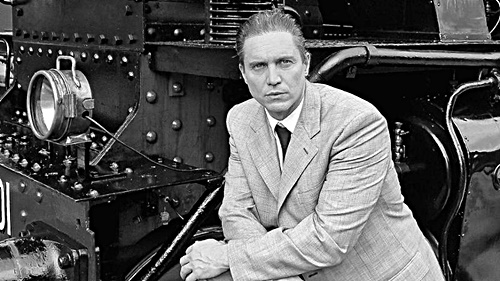
It will be after the second world war, with the arrival of the second generation of the inheritance of this family, that the firm would expand and become famous. With Lino Zanusi, the brand would become heard and more important in all of Italy in terms of electrical household products and later to spread throughout Europe thanks to other brands such as “Rex”. Lino Zanussi, the man who, on the contrary compared to others who had finished high school, at that time 14 years old, attended a professional development course in the morning, and in the afternoon he dealt with the family property and not as the son of the boss but as a worker in this company to her. And here is June of 1968, when the president of the Italian Republic, Giuseppe Saraga, appointed Lino Zanussi “Cavagliere del lavoro” precisely at the moment when the company that produced electrical appliances had a staff of 13 thousand people.
A few days later, his plane will crash in San Sebastian, Spain. The legacy of the entire company will not be easy. The third generation of the Zanussi family will not be in charge of the company, but Lamberto Mazza, the company’s manager, was chosen. In 1981, Lamberto Mazza and the Zanussi company will also own the Udinese football team, which for several years had reached the highest category in Serie A.
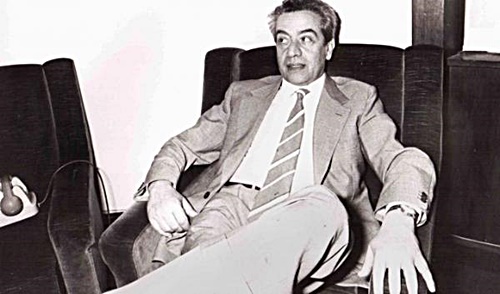
A year later, the letter “Z” as the signature of the Zanussi company would appear on the jersey of the team’s players along with the emblem of this club. This was an action that caught the eye, because at the time all the jerseys or uniforms of the Italian football teams were “clean” from any business firm. Advertising of any firm was prohibited by law. But it must be said that it was not the first time that a company was looking for a place to appear on the jerseys of the players during football matches. However, this time, to avoid the rules, the emblem of the “Udinese Calcio” team was somewhat modified.
The emblems of the clubs are modifiable and for this anyone can “put their hands” and no one can say anything. When Zanussi’s “Mrs” ended up in the jerseys of Udinese, for the household appliances business group, it should be mentioned that it was not the moment when it was enjoying a glory, even in 1982 the deficit reached the figure of 130 billion, for the first time since the distant year of 1916, when everything had started in its activity in a place of 30 square meters, in Pordenone. On the contrary, instead of opening jobs, it had come at a moment of crisis for mass cuts. 4,500 will be the number of workers thrown out of the 22,000 that the company had. How is it possible when this young company manages to buy one of the stars of world football, Artur AC Zico? We will explain this below! At this moment, there is no one in the world who does not try to do something, to find a solution, to try even some kind of manipulation to cover the critical situation. Because in life to win sometimes you have to pretend that everything is going well even though you are on the road to bankruptcy and you are not the first. “Grace to the eyes” that blurs the appearance, ideas and impression of anyone who was preparing to jump into action. “Flamengo” of Rio in Brazil, demands the amount of 6 billion lire for the world famous star in the best form of the time. Everyone knows him by the nickname “Zico”, even in Brazil they call him by the nickname “El Galino” (Rooster).
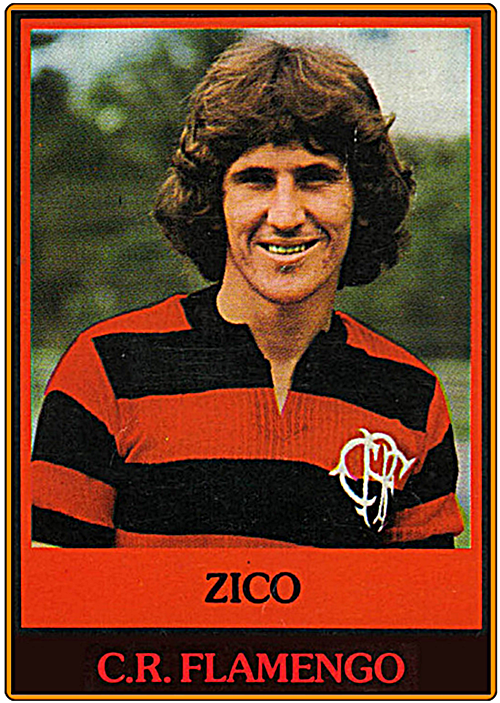
In reality, in the “frenzy” of world football, Zico, together with Maradona and Platini, built the world’s strongest trio. Maybe she doesn’t have Diego’s personality, but like all Brazilian women, she has class and wit. Even at the technical level, Zikon can only be admired. There is not much that has sent his Flamengo to the world club success by winning the Intercontinental Cup against Liverpool in 1981.
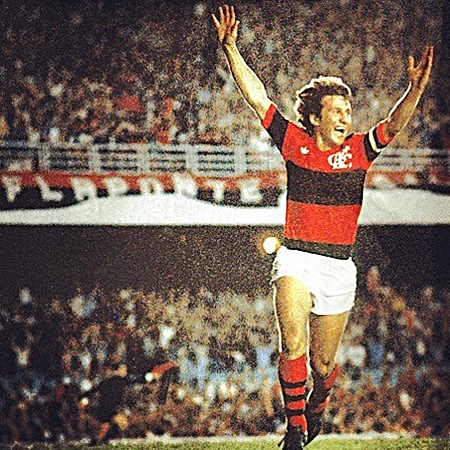
The idea of the president L. Mazza and the director of the sports club Dalcin was to bring Ziko to Udine which, however, remains a provincial team and which had not many who had come from the second category (“B” series). Okay, because here in Udine they could have brought players like Franco Kauzio and Pietro P. Virdis, but how can they get Ziko with Udine, when the “Zanussi” company is drowning in the turbulent waters of the surplus fund? So how do you do it? As we said above, Flamengo asked for 6 billion lire, while Udinese put less than 4 billion in its coffers. Ziko is not a “Zanussi washing machine”, you can’t buy it with this money, and the FIGC (Italian Football Federation) would not allow such a vague operation applied by a club that really doesn’t have the resources and so on. moreover, the company now has 4,500 workers in question, in the swing for their jobs.
To the crowd of fans, (not those of the company’s employees), Lamberto Mazza trumpets things of this nature: “I want to make Udinese a great team. On the other hand, it is up to me to say that I have tried to do successful things…” Well, just like a “poker” player with her shoulders against the wall who always tries to re-launch, maybe it could be her last chance in life. This was strange news to say the least. Many consider Zico, the “White Pele”, to be the best player in the world even today. But few people outside of Italy have heard of Udinese – a club based in Udine (population 100,000) an hour from Venice. For a long time, Zico had rejected offers from the richest clubs in Europe. The family man, the father of three young sons, was happy in Brazil and earning a considerable amount. He had connections in high places in Brazilian society, as a personal friend of Brazil’s military ruler Viceredo, and among other things Zico was extremely popular with fans while being successful with his club Flamengo. Together they had won the championships of Rio de Janeiro, the Brazilian league titles, the cup of South American champions (Libertadores) and the championship of world clubs (FIFA Intercontinental Club – today FIFA Club World Cup).

It’s strange how to trade all this with a small city club like Udinese. It must have been a large amount of money to entice him to move to Udine. At first, no one could understand where the money for this expensive transfer operation had come from. The leaders of Udinese were not particularly rich people with the situation they were going through. It eventually emerged that an English advertising “consortium” called Grouping Limited had financed the deal, intending to use Zico as a publicity puppet on a large scale. Groupin Limited has its residence in London, the English capital, which has something to do with the mud in this case as well.
And the mystery lasted until it was revealed that the total value of Grouping Limited’s shares amounted to……..three pounds. Further investigation revealed that an abandoned Church building stood exactly where Grouping Limited’s London office was supposed to be. It was clear that Grouping Limited was a front for something else. At that time, however, no one took the trouble to verify the company’s capital in Londer, nor its residence, which has the cards in hand to use the image of the world’s greatest player, Artur AC Zico, as an advertisement! In exchange for this mission, “The Grouping Limited” with those 3-4 pounds and the abandoned Church, takes over the burden of pouring 2 billion and 400 million lire needed to complete the figure of 6 billion demanded by Flamengo in the purchase of Ziko from Udinese.
This is how it can be explained that the money comes from large international companies that have decided to bet on this investment. Now everything seems to be done! In fact, the deal was not closed like that… Zico’s arrival at Udine was of course advertised by the press and TV of the time, which showed doubts and controversy. Meanwhile in Italy, “Juventus”, the sports arm of the Fiat empire, was angry about the transfer of Zico. At first they had tried to get it themselves, searching for it for years. Now Udinese, with Zico, could represent another threat to their supremacy in the Italian league. This supremacy was broken last season by Roma who took the league title. Roma had strengthened for the new season by signing Toninho Cerezo, another Brazilian star. The acquisition of Zico becomes a media event. Juventus decided to kill two birds with one stone and began to use their influence within the Italian Football Federation.
At this moment, FIGC intervenes and blocks the transfer of “Galinho” from Brazil.
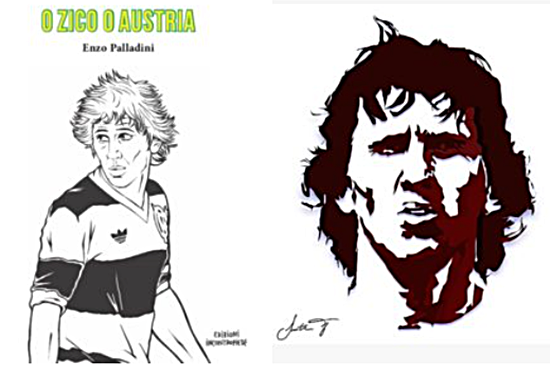
The motivation is futile: Udinese would not have the necessary guarantees for financial coverage. On June 9, the Italian federation issued a veto on the Zico/Cerezo transfers on the grounds that the money that had financed the deals had come from sources outside the two clubs and that the deals had been completed after the off-season transfer deadline. Zico and Cerezo will have to stay in Brazil. This caused an uproar in Rome and Udine. A revolutionary fire was kindled, recalling the heady days of Garibaldi. The influential federation had decided what they liked, but the fans didn’t want to know. For this reason, the next day violent protests broke out in the streets: in Udine they shouted “either Zico or Austria”.
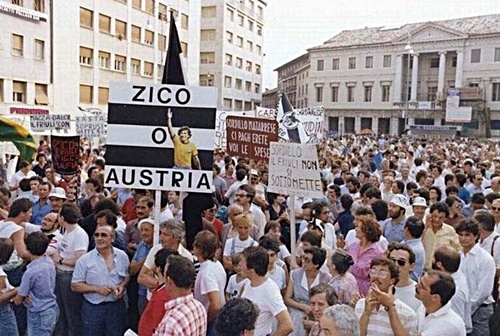
Not only in Udine, but there is suffering and public protests in Rio as well: desperate cries from Brazilians for the departing idol. Udine took to the streets and threatened to seek annexation with Austria if the FIGC did not unblock the transfer, which it subsequently did, after involving the political world in debate up to the highest levels of the state, including president Sandro Pertini.
* * *
Udine is located in the province of Friuli, in northeastern Italy on the Austrian border. Friuli was once part of the Austro-Hungarian Empire. The call was raised for a re-severance of political ties with Italy and a return to Austrian rule. It wasn’t entirely serious, of course, but the indignation at an externally imposed decision that blocked Zico’s arrival at Udinese ran deep. At the age of 87, the President of the Republic, the football fanatic, Mr. Pertini, slowed down his weight in the debate stating that he would be very pleased if the Brazilians came. A special committee was set up to examine the validity of the Football Association’s course of action.
The President of Rome, Mr. Dino Viola was sure of this: “I am sure that justice will prevail.” After a long debate, the new committee declared the Italian Football Federation’s case invalid and overturned their decision. On July 23, the veto was lifted. Zico and Cerezo would eventually arrive in Italy. It is still a well-kept secret who gave the money to bring Zico to Udinese. One assumption is that it came from a group of Friulian industrialists. The people of Friuli have a strong sense of their own distinct identity and pride themselves on their self-reliance. These feelings were strengthened after the earthquake tragedy in the area in 1976, which claimed more than a thousand lives. Many people returned home to take part in a concerted effort to rebuild things. Udinese football club has become a symbol of a reborn society and a focal point of Friulian pride. Finally, Zico arrives.
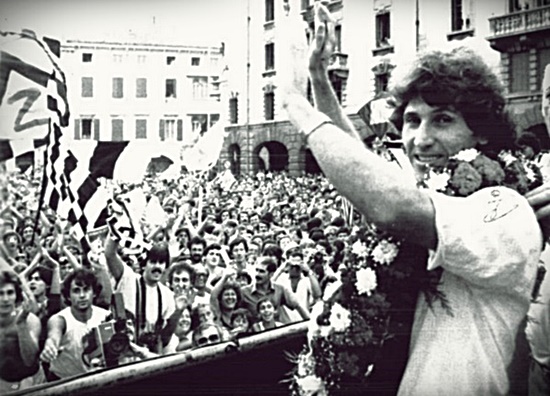
And with the Udinese jersey, he will play 39 games, scoring an impressive 22 goals. And in 1984, he was ranked second in the list of goalscorers after Michel Platini. So far Zico has been an unqualified success at Udinese, although he complains about the ultra-destructive methods of the Italian defensive tactics.
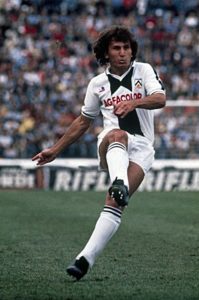
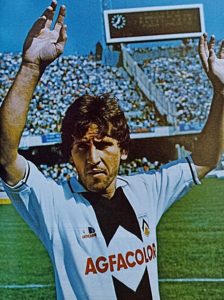
“I left the field thirty minutes before the match against Catania and I was surprised that my marker Ranieri didn’t follow me to the dressing room.” “Avellino’s host never stopped pulling my shirt throughout the match and at one point even hit me in the face! Football is full of guys like these who are more inclined to destroy than play. To be honest, sometimes I feel I’ve had enough of all that.” Despite this, Zico led Italy’s goalscoring charts with eight goals after nine games – a sensational average. Six of those came in the first four games. Goal Zico’s highlight was his last – scoring after four minutes against his old Brazilian nacionales teammates Falcao and Cerezo to beat champions Roma 1-0.
In 1976 Friuli was hit by the wrath of a devastating earthquake, but without wasting a second more than was necessary in tears, it armed itself with silent heroism. Paradise lost had to be rebuilt with bare hands. In 1983, seven years after the opening of that abyss, Zico arrived in Udine. Bells can ring in any corner of the world. The pulsations of heaven can also pass through difficult and harsh lands, lands tortured by nature, lands accustomed to occupying daily life, disconnecting it from destiny.
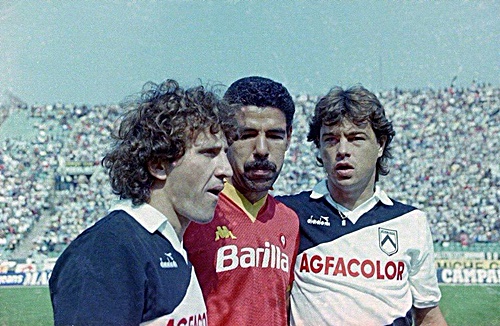
Yes, that’s right, Zico. For a twenty-year-old today, this name may mean little. Maybe nothing. Sin! Zico is underrated in football history, far from that virtual hall of fame where he rightfully deserves a place of honor. The wealth of today’s modern generation is technology. On Youtube just type “Zico” in the search engine, then activate full screen mode, focus and enjoy. Because after you have noticed certain moments of this wonderful artist, the purest thought is: “How I would like someone to caress me like that number ten caressing the ball”. Pure football eroticism!!! That gentleman there, who today may look like any grandfather who takes his grandchildren to eat an ice cream in Barra de Tijuca, played for Udinese.
A year and a half of fine poetry, applied art in the green rectangle. During that time Zico stretched out his arms just like the redeeming Christ and decided to bless Friuli with his charisma which is defined by the divine. This is not hyperbole, because the world has changed on all levels in the past thirty-five to forty years. In 1983 there were no mobile phones, no one thought the Italian lire could be withdrawn from circulation and you could ride a scooter without a helmet. But Zico at Udinese is like today Neymar decided to play for Parma, or Lewandowski for Verona, Ibrahimovic for Sassuolo.
Much less normal than Cristiano Ronaldo’s arrival at Juventus. Big clubs today attract big players. Small clubs produce small phenomena to sell to those who can afford them. Small realities that attract world stars are rarely seen. Because that gentleman there, that phenomenon there, christened Arthur Antunes Coimbra, was ranked eighth among the players of the 20th century by FIFA, but also in the list of one hundred Brazilian personalities of all time. Pure myth. What prevents Zico from circulating in the firmament of the 4 or 5 biggest star footballers in history is probably simply the lack of luck with the Brazilian national team. From a numerical point of view it would be all: 88 matches in the Brazil uniform, 66 goals scored. Of these 88 matches, only 4 were lost. But here is the “point”. One of these four defeats was that of July 5, 1982 in Sarrià against Italy, a defeat which denied Brazil the opportunity to consecrate one of the strongest teams built in the history of football as world champions.

The hat-trick scored by Paolo Rossi remains Zico’s only defeat on the pitch in three editions of the World Cup: third place in 1978 (with Argentina’s crazy 6-0 win over Peru which knocked the Brazilians out of the final), out in the second group stage in 1982 and in the quarter-finals on penalties against France in 1986. After leaving football, Zico found a logical explanation for all this: “I would never change one of the titles I won with Flamengo for a World”. A fitting statement, as Brazil won five World Cups without him, while the red and black nation, as Flamengo’s extraordinary fans like to be called, divides the club’s history into “pre-Zico” and “post-Zico”, (just like Christ ) recognizing in him a true god capable of granting immortality for a flannel and a symbol. And it is also a phrase that frees him from what to other players would be considered betrayal, the two seasons played in Italy with Udinese and the end of his career in Japan, with Kashima Antlers. Choices dictated above all by economic gain, that’s clear and subject to coming out without false modesty. But for the red and black nation it is not like that, Zico will never be labeled as a mercenary.
In Carioca’s collective imagination, Galinho and his horizontal striped jersey will always be the same thing, completely identified, one love, one heart, two colors. Remembering those times also means feeling a pang in the heart about the difference in technical level between the Serie A of the 80s and the current one. Udinese were a small team, very true, but coach Enzo Ferrari could build an attack consisting of Zico, two immense talents like Franco Causio and Massimo Mauro and a ruthless finisher like Pietro Paolo Virdis.
All the teams were able to compete on equal terms with the Roma of Falcao and Cerezo, with the Inter of Altobelli and Beccalossi (later also of Rrumenigge), with the Napoli of Maradona , Giordano, with the Juventus of Platini, Boniek and Paolo Ross, the Milan of Mark Hateley and Ray Wilkins, with the Fiorentina of Socrates and Antognoni…… 
Italy was an El Dorado capable of attracting the world’s greatest talent, a kind of NBA with an even greater planetary resonance. If you haven’t played in Italy, you were nobody, just to be clear with the high level, the difficulty of the Serie “A” category. But despite all this, Zico to Udinese remains one of the most fascinating paradoxes in the history of the transfer market. Maybe more than Paolo Rossi at Perugia, certainly much more than Cristiano Ronaldo at Juventus and a thousand times more than Ronaldo Fenomeni at Inter. Luigi Maffei, a journalist of “Gazzettino”, had written it with impressive effectiveness: “For us Friulians, Zico in Udinese had the same meaning as a Ferrari engine mounted in a small car. We felt like we were the only ones in the world who owned such a wonderful and absurd car.” Because Zico made the bells of beauty ring in Udine, exactly where there was destruction and death seven years ago”
By: Pjerin Bj © Reserved material | The exclusivity on this page is dated December 2023 _____________________
Sports Vision + / The Hour of The Champions in activity since 2013
Discover more from Sports Vision +
Subscribe to get the latest posts sent to your email.


